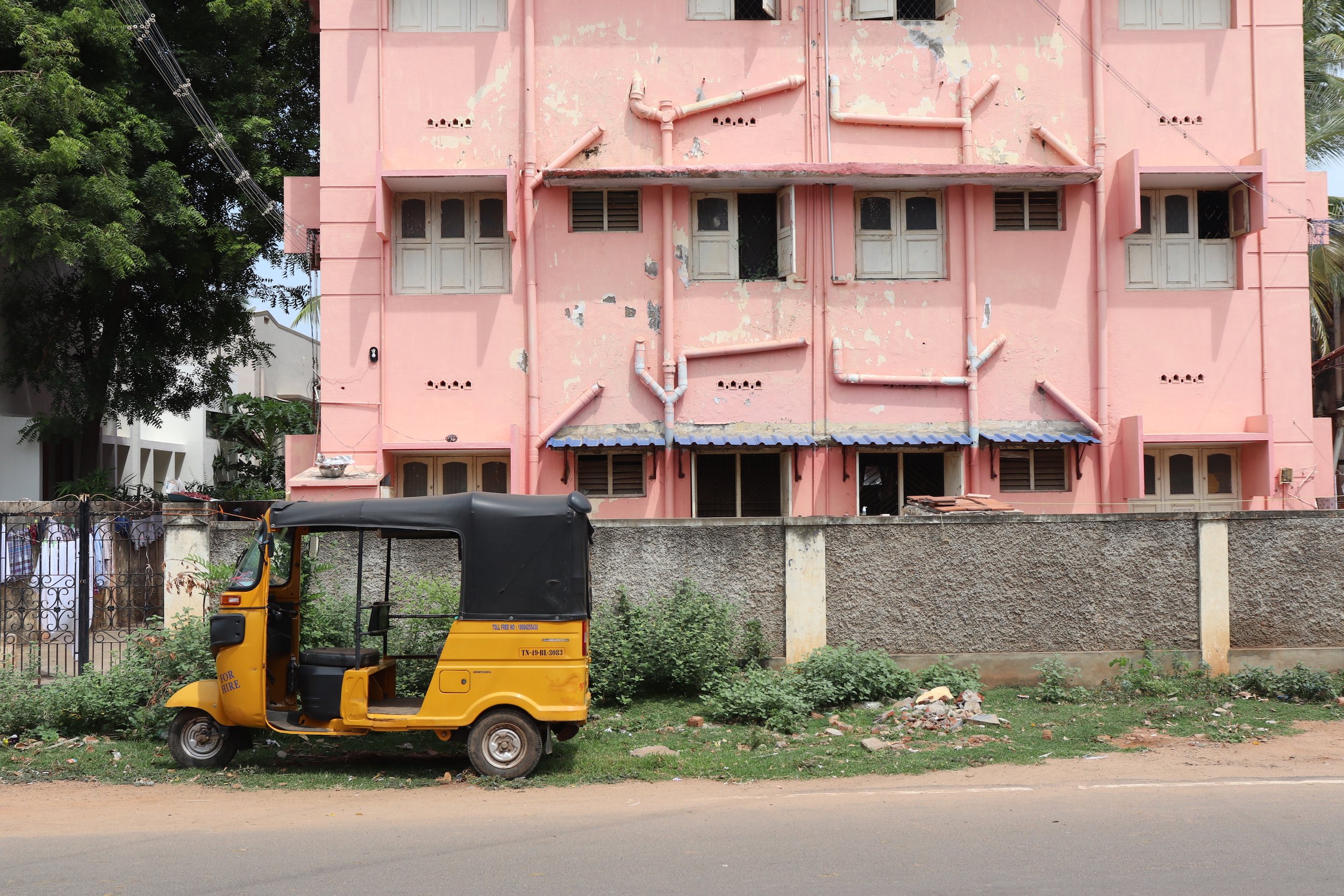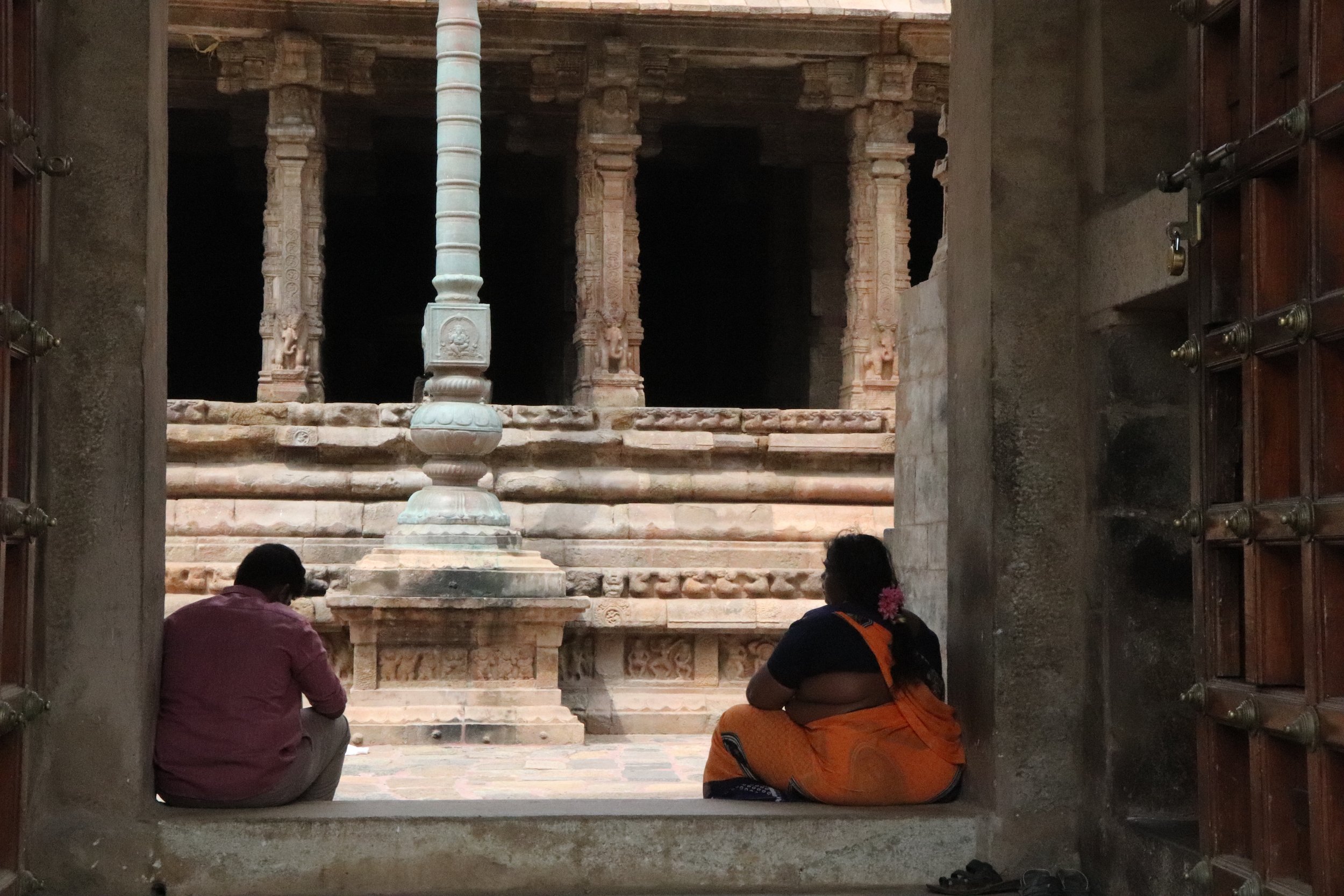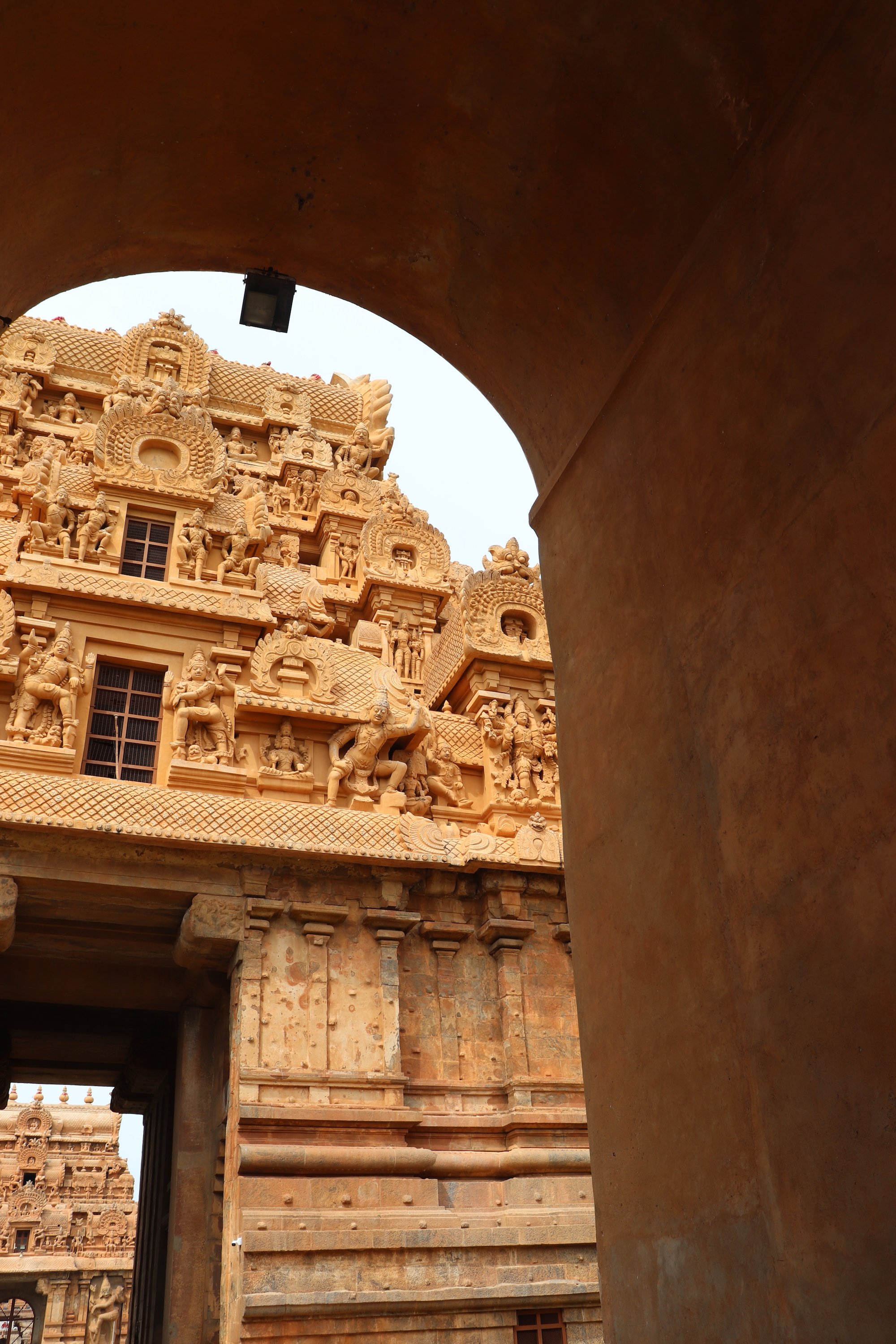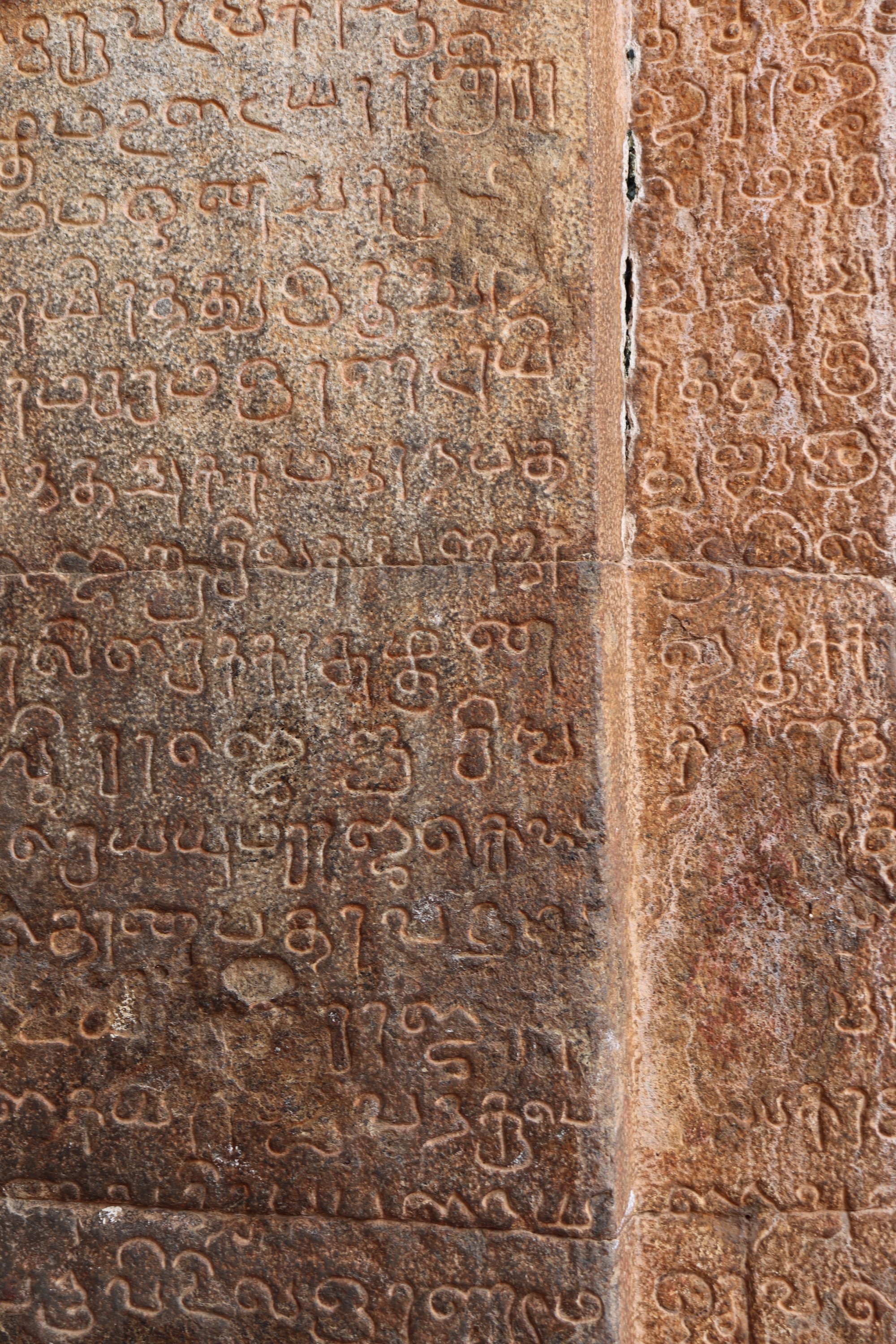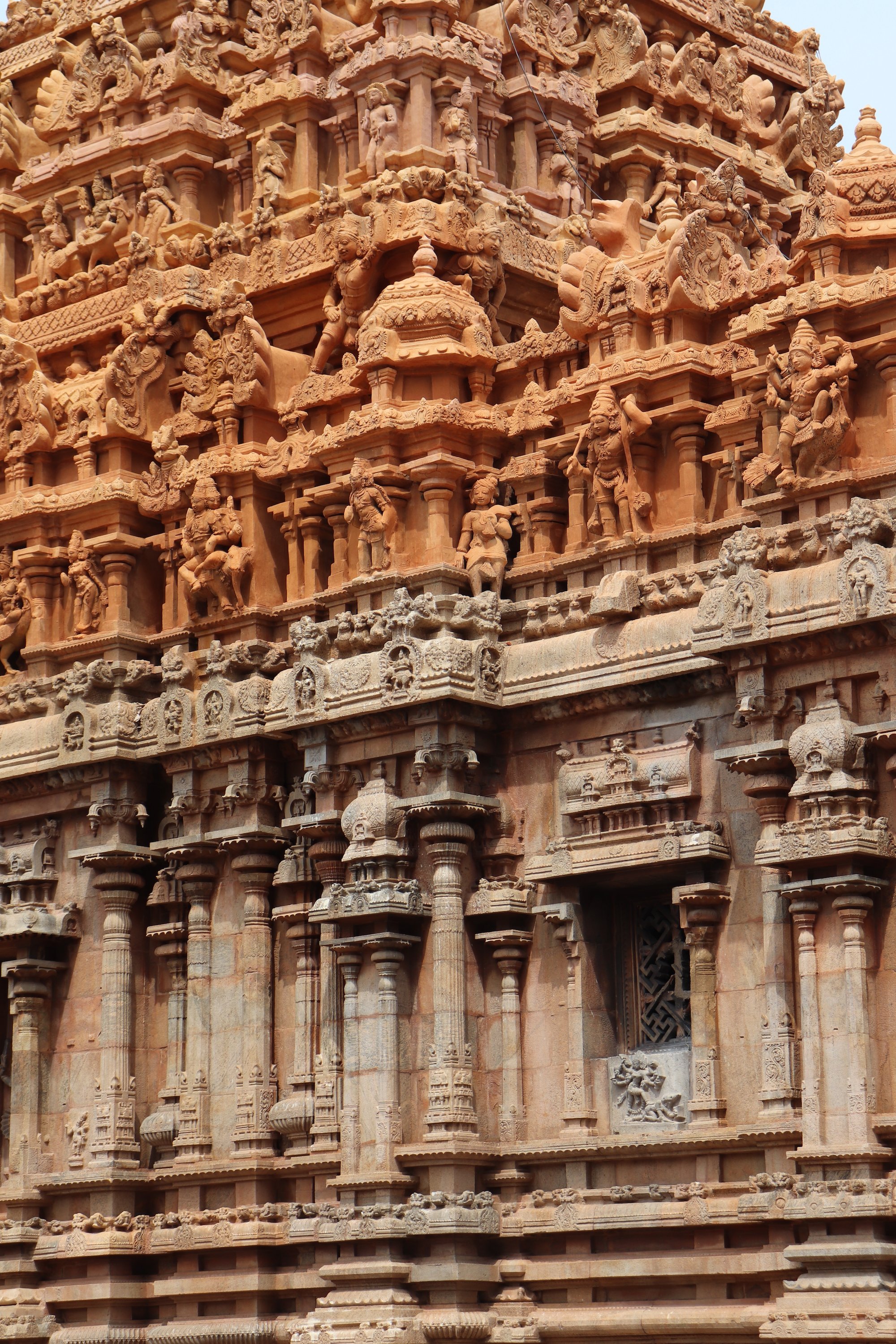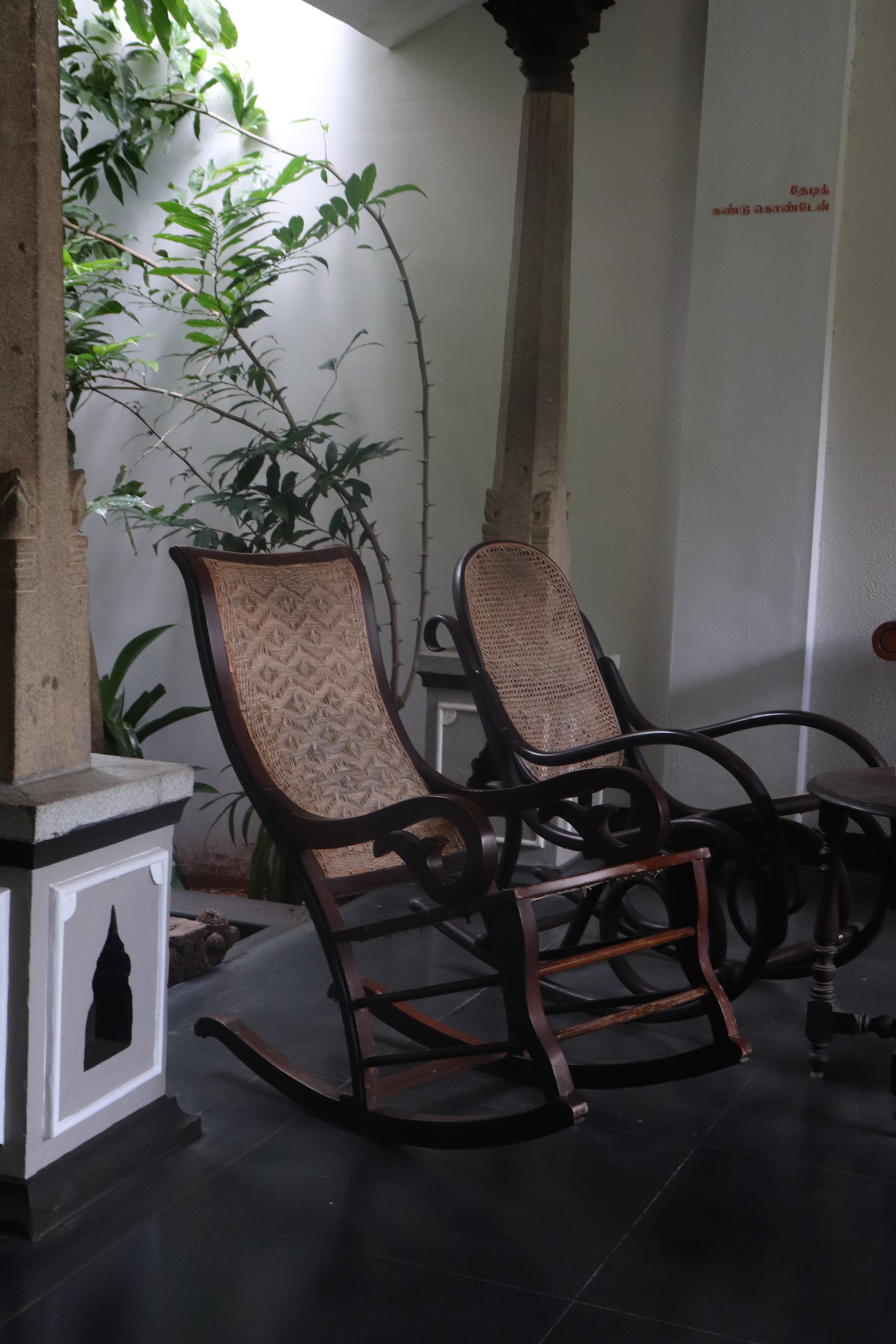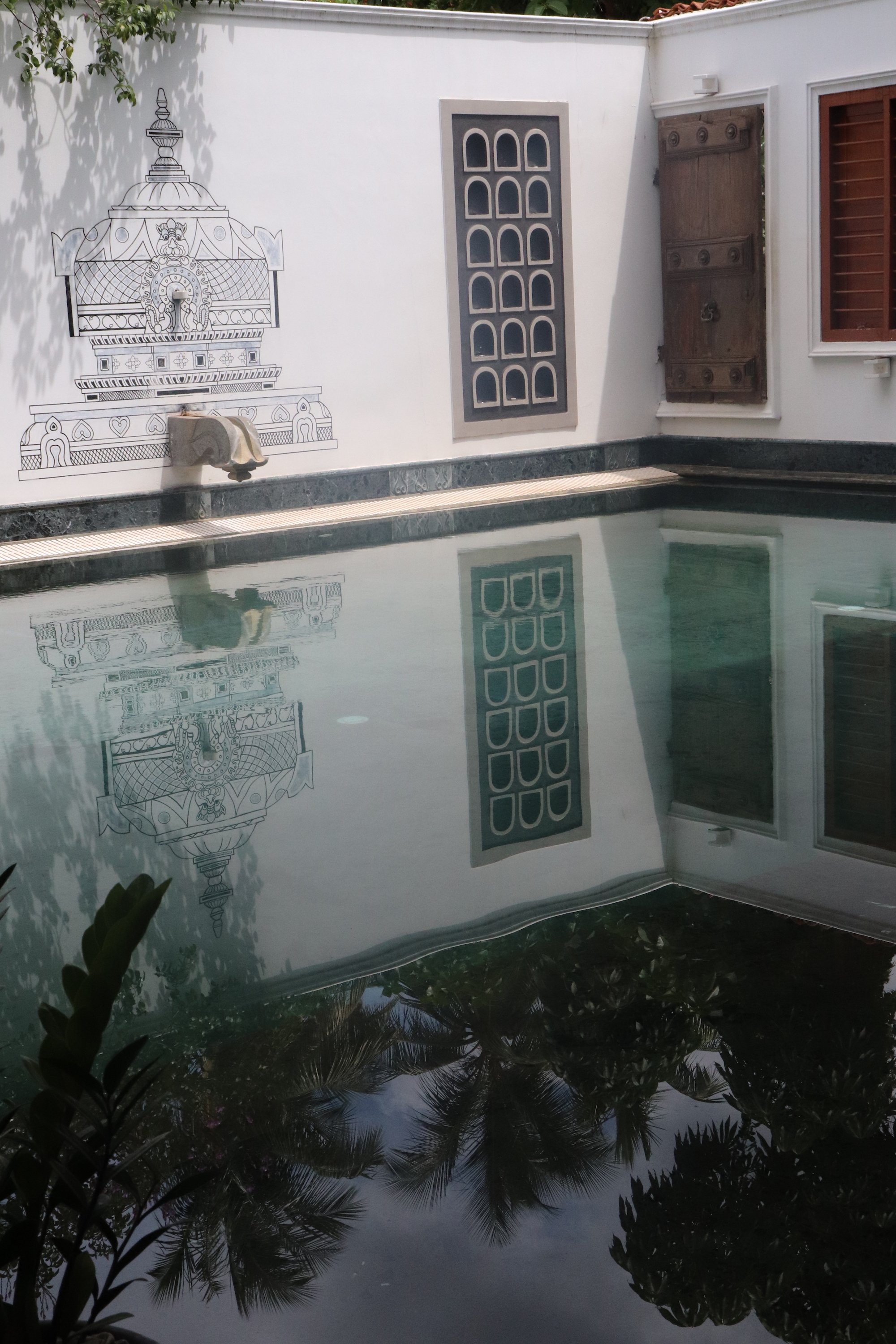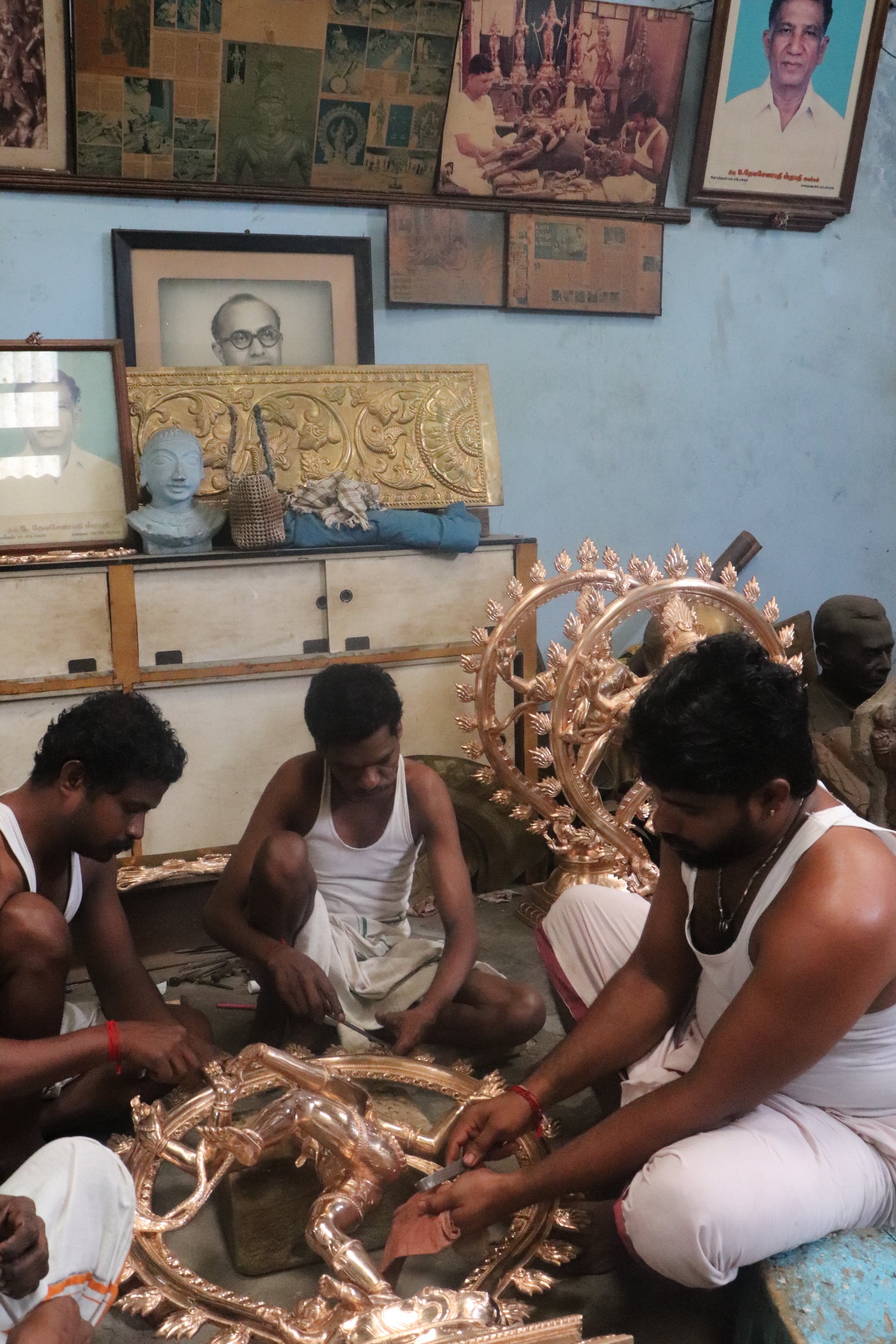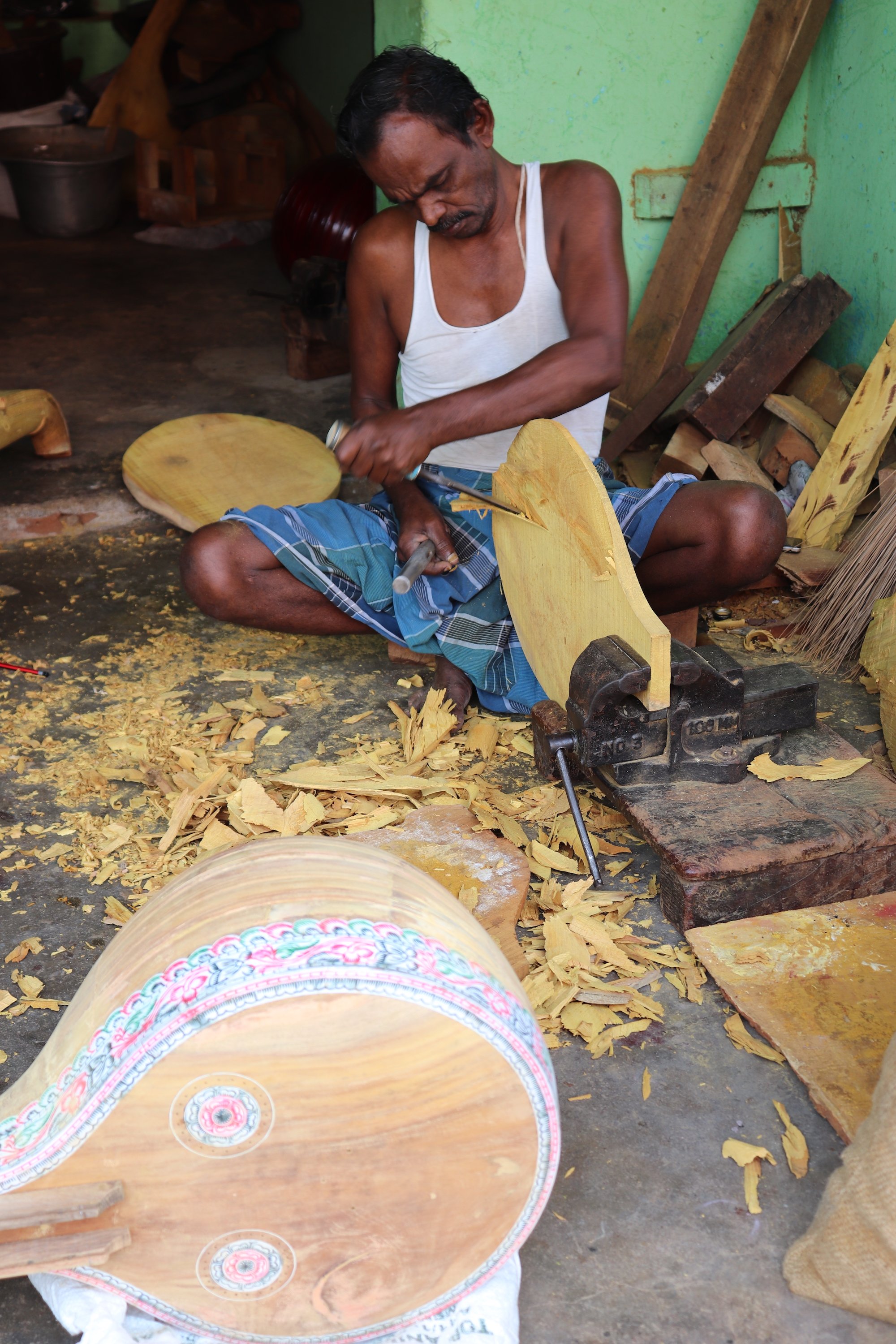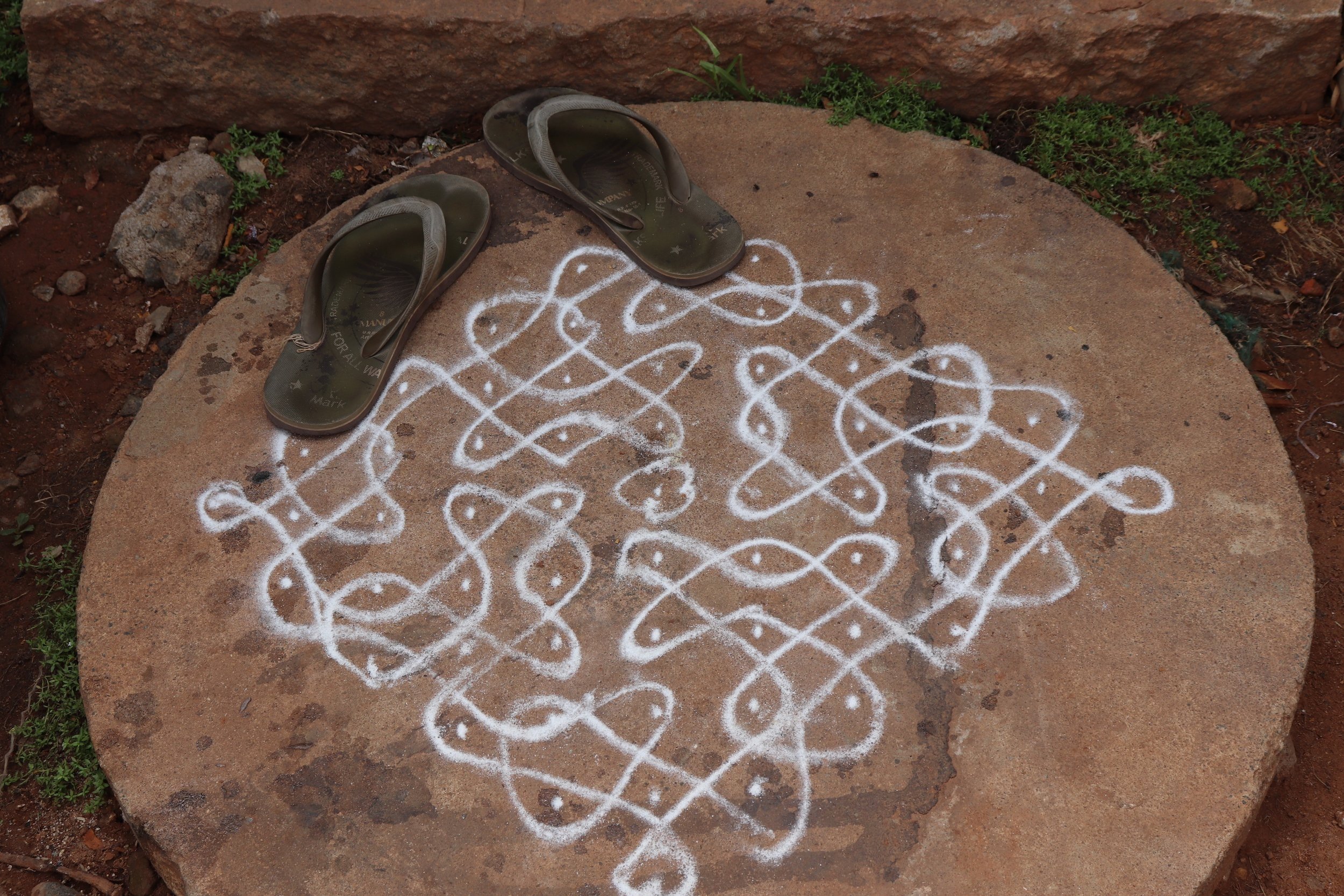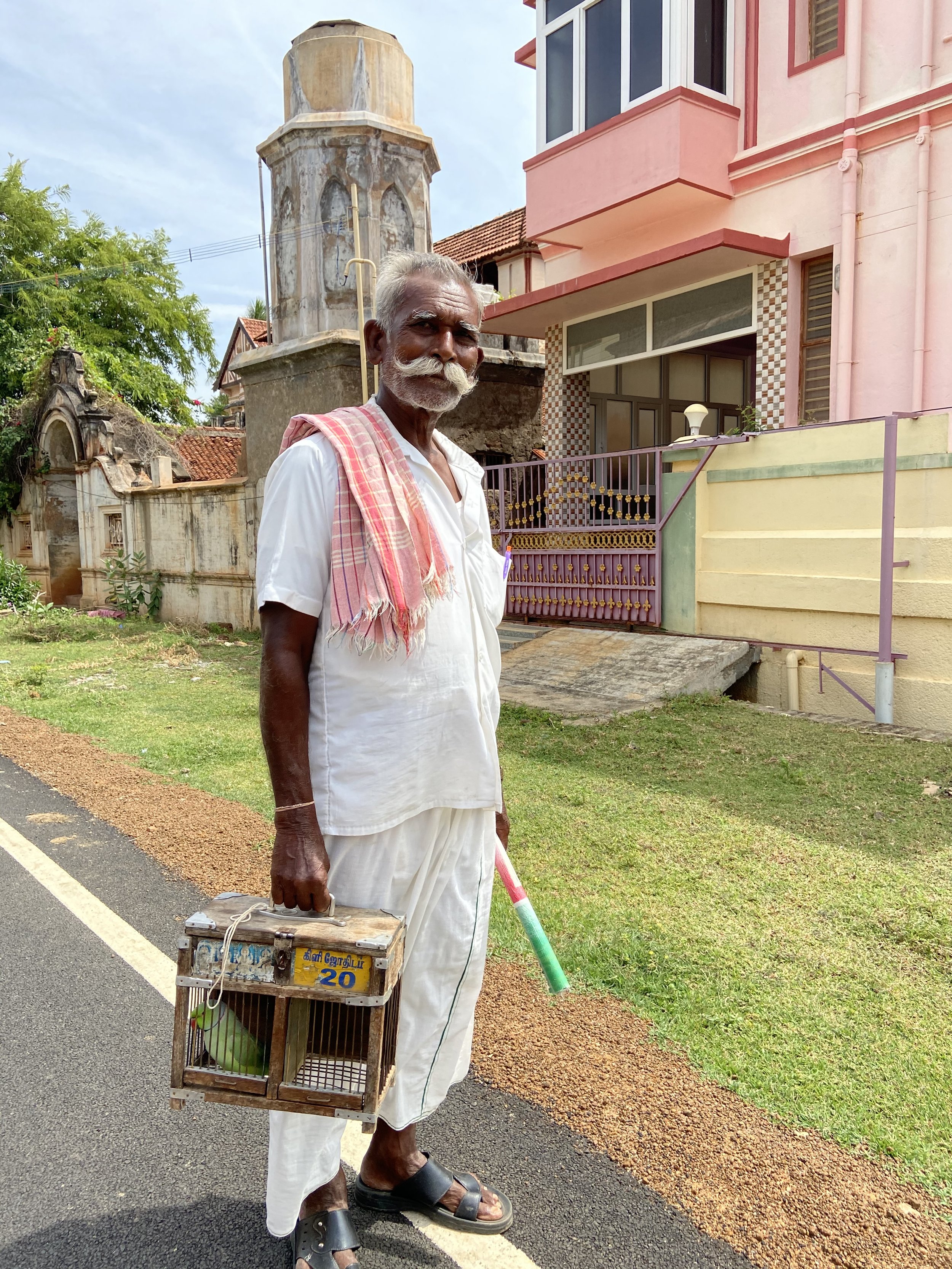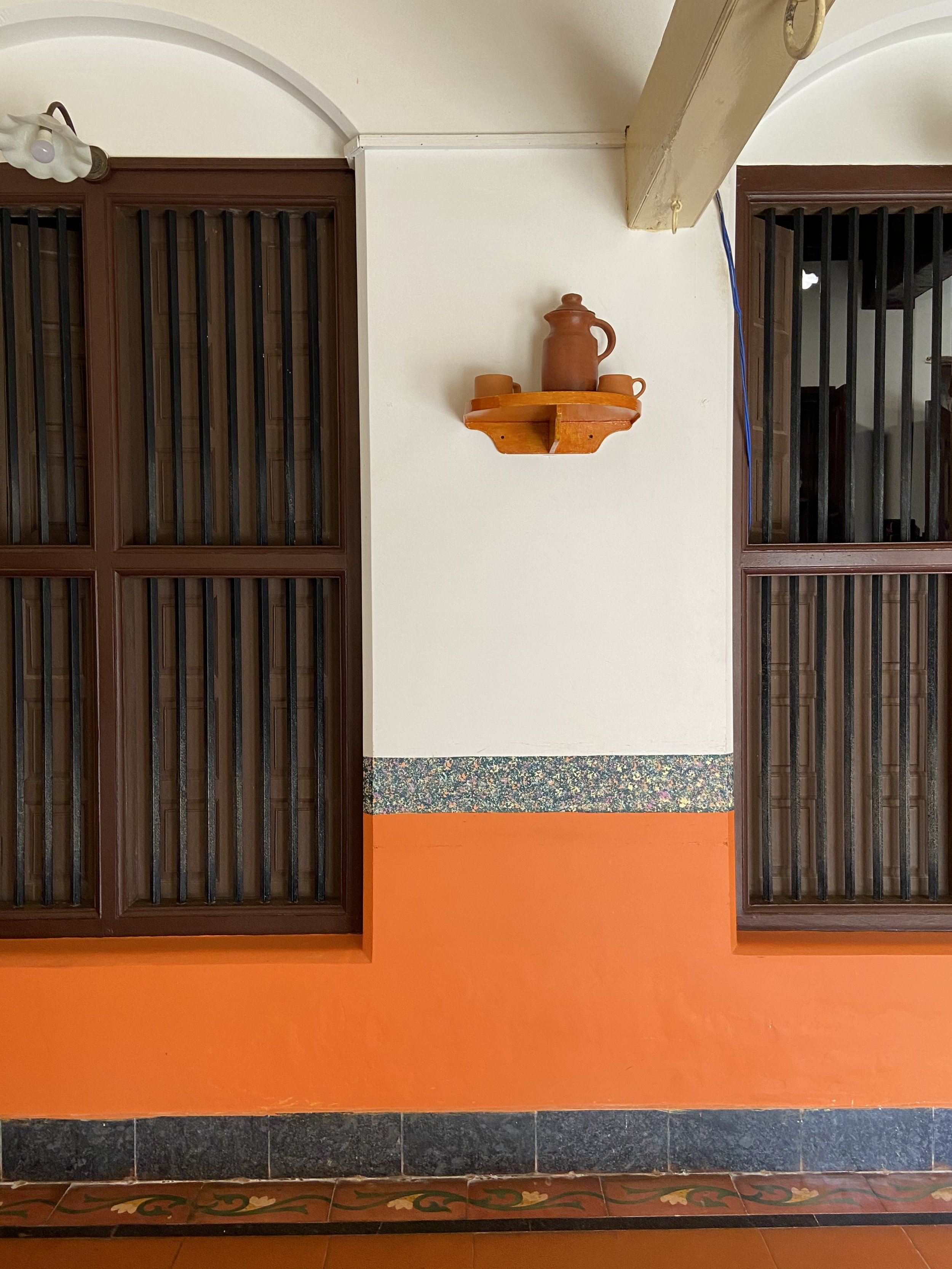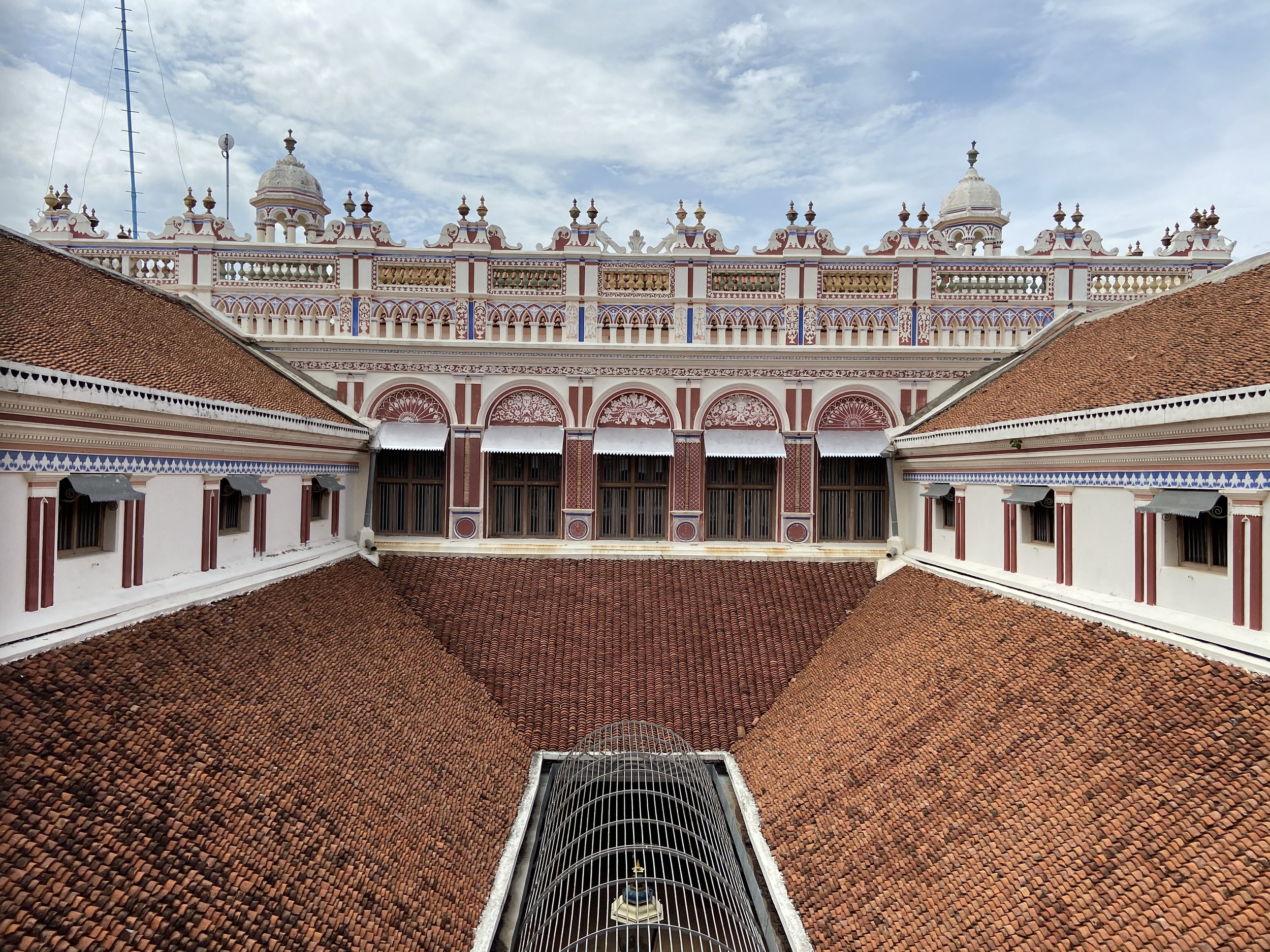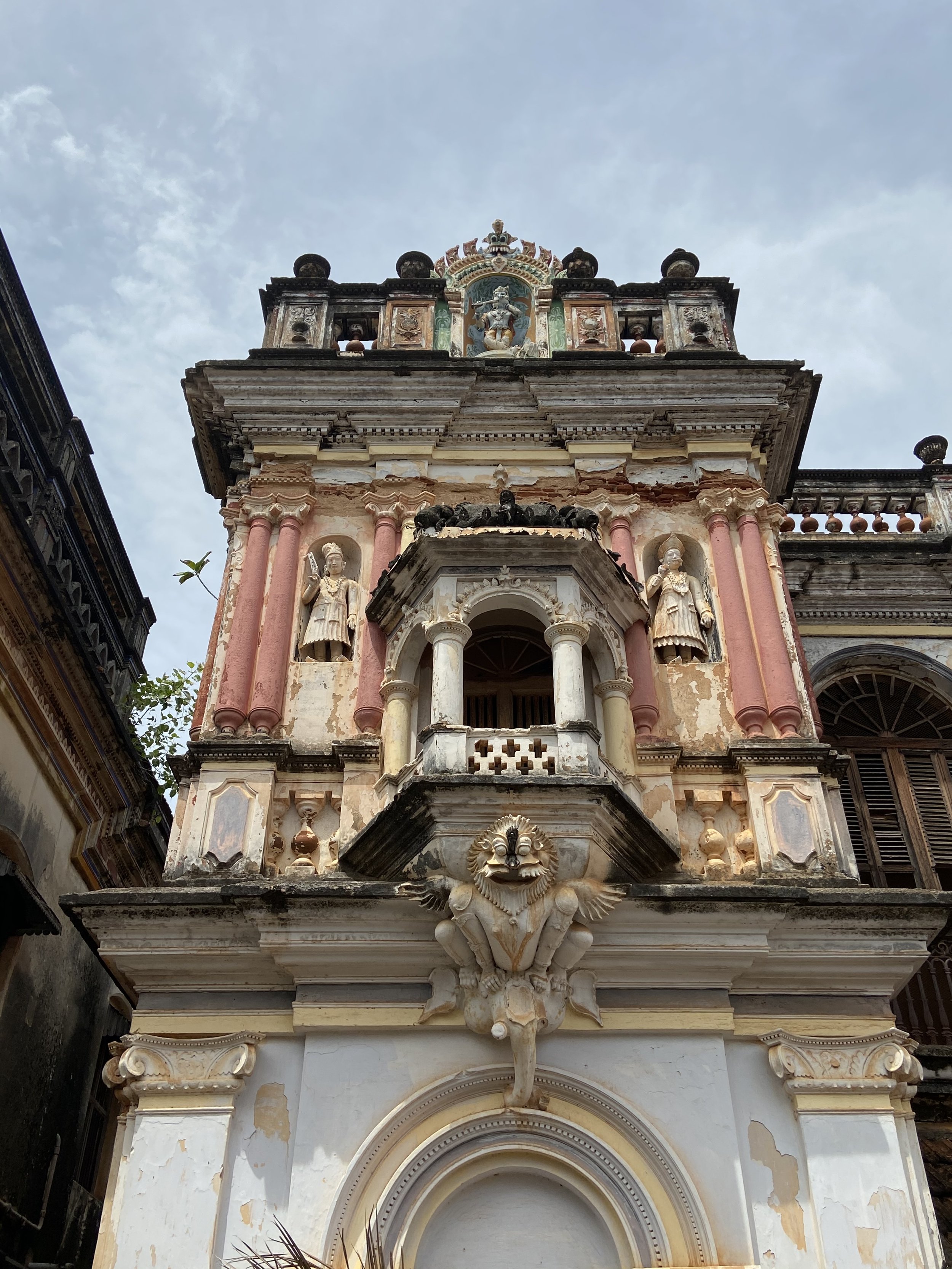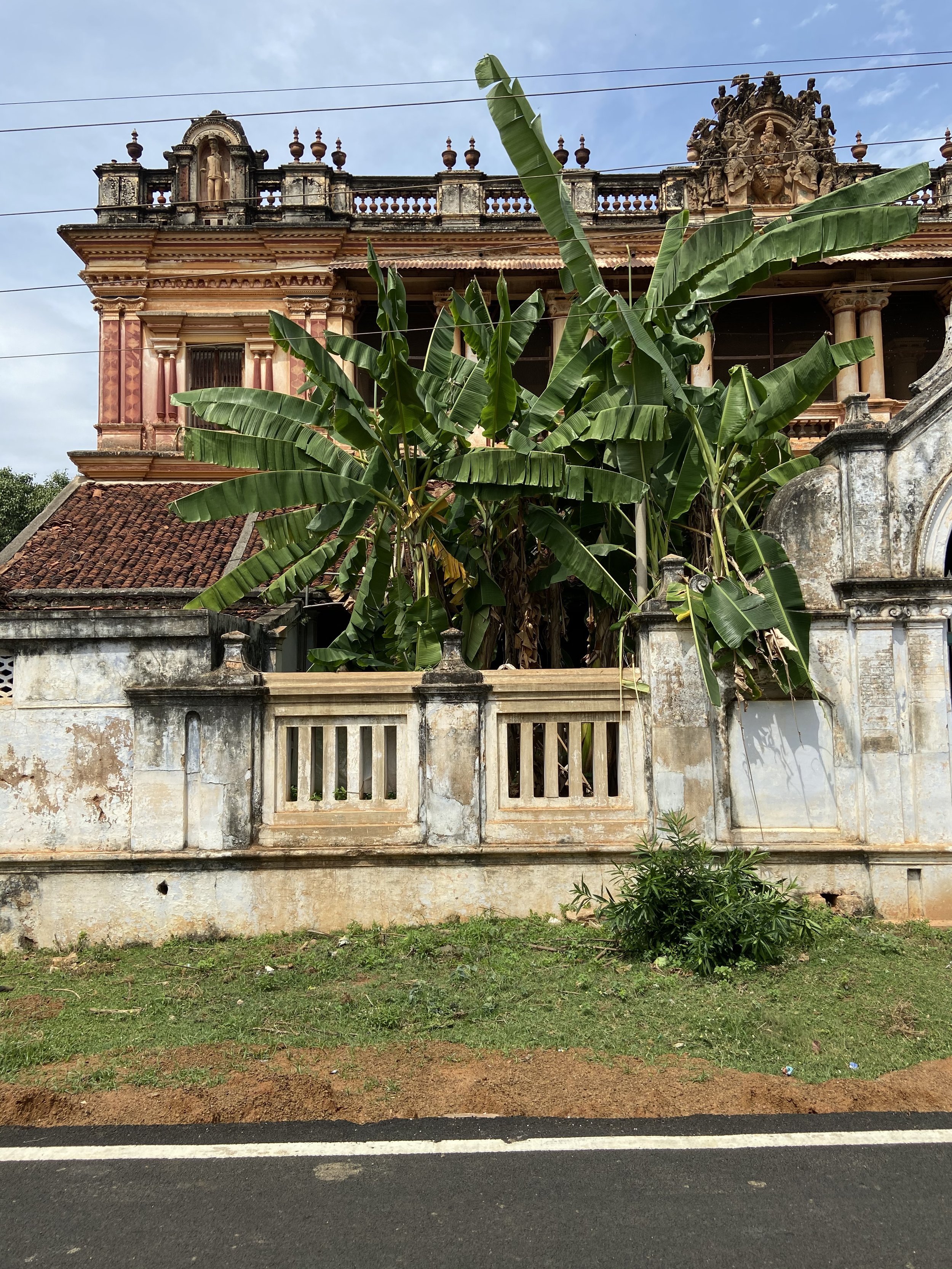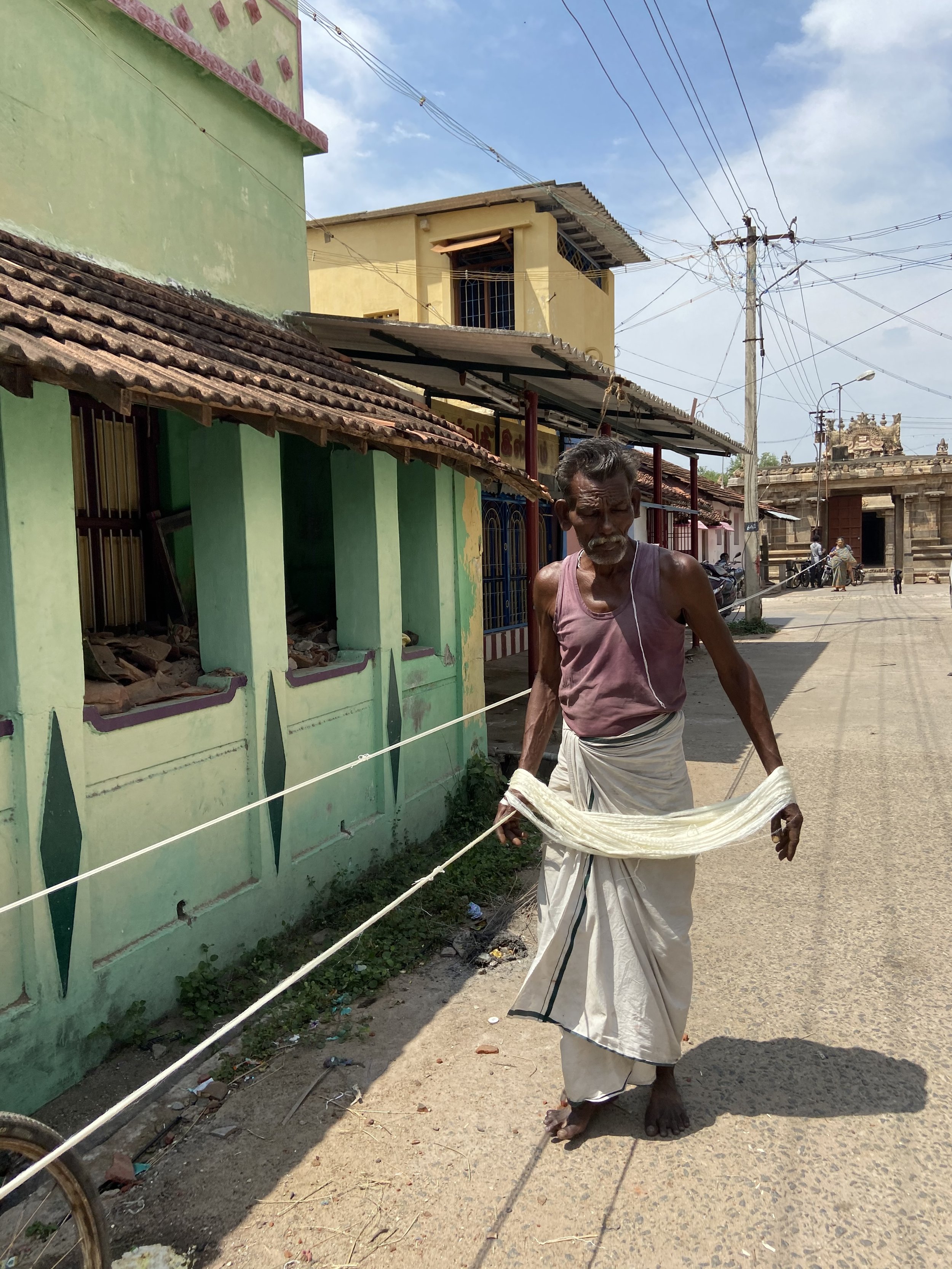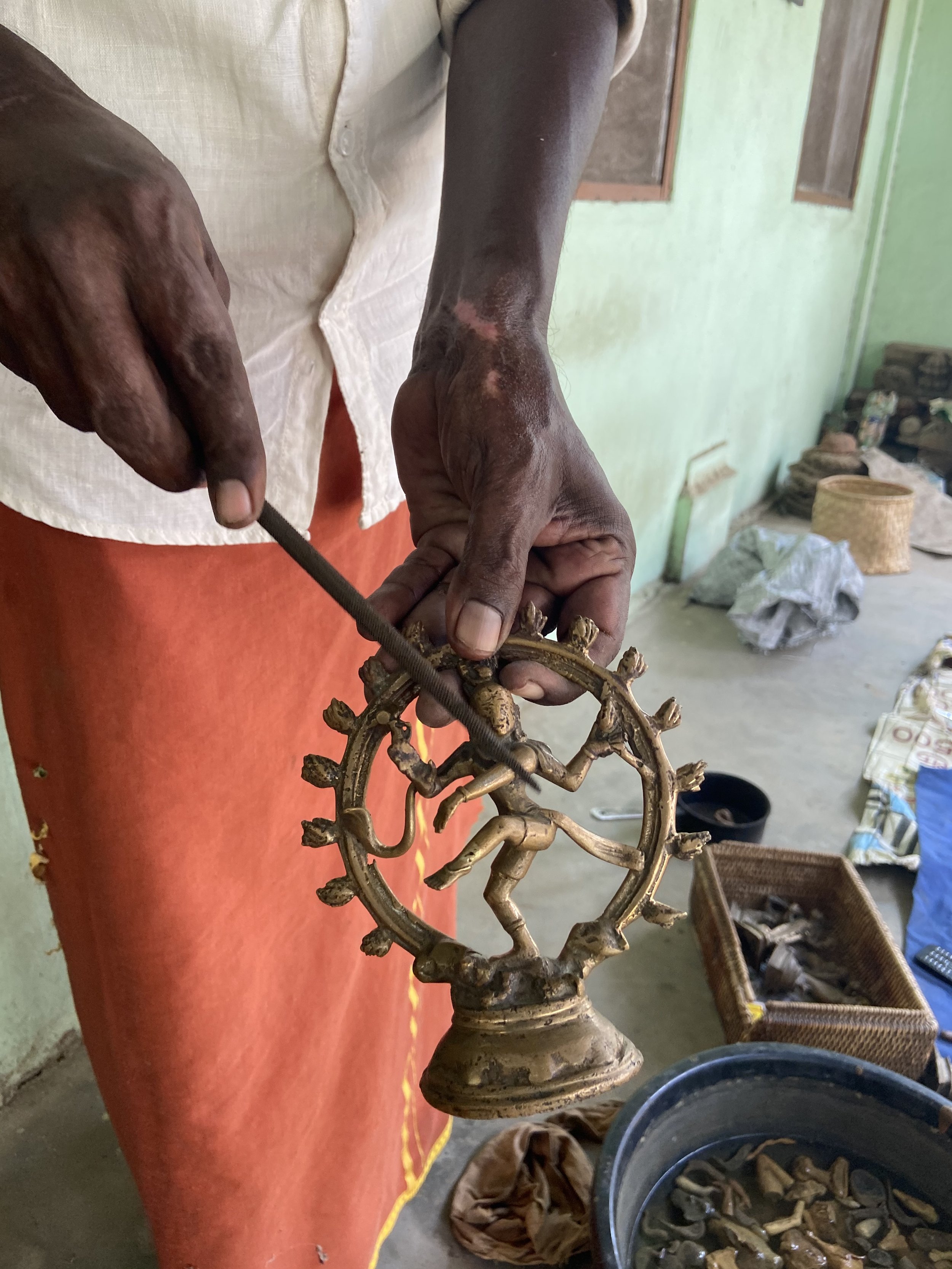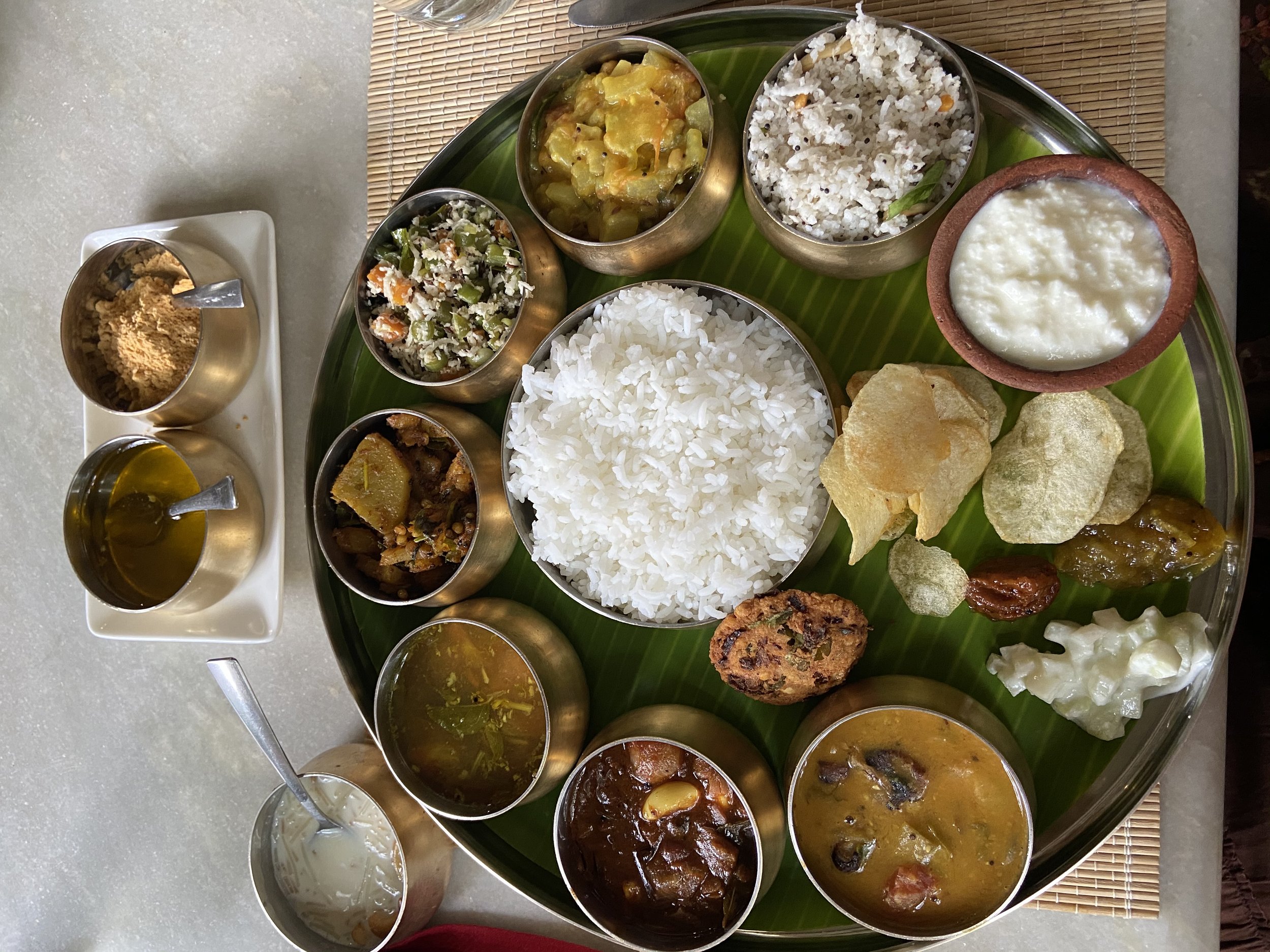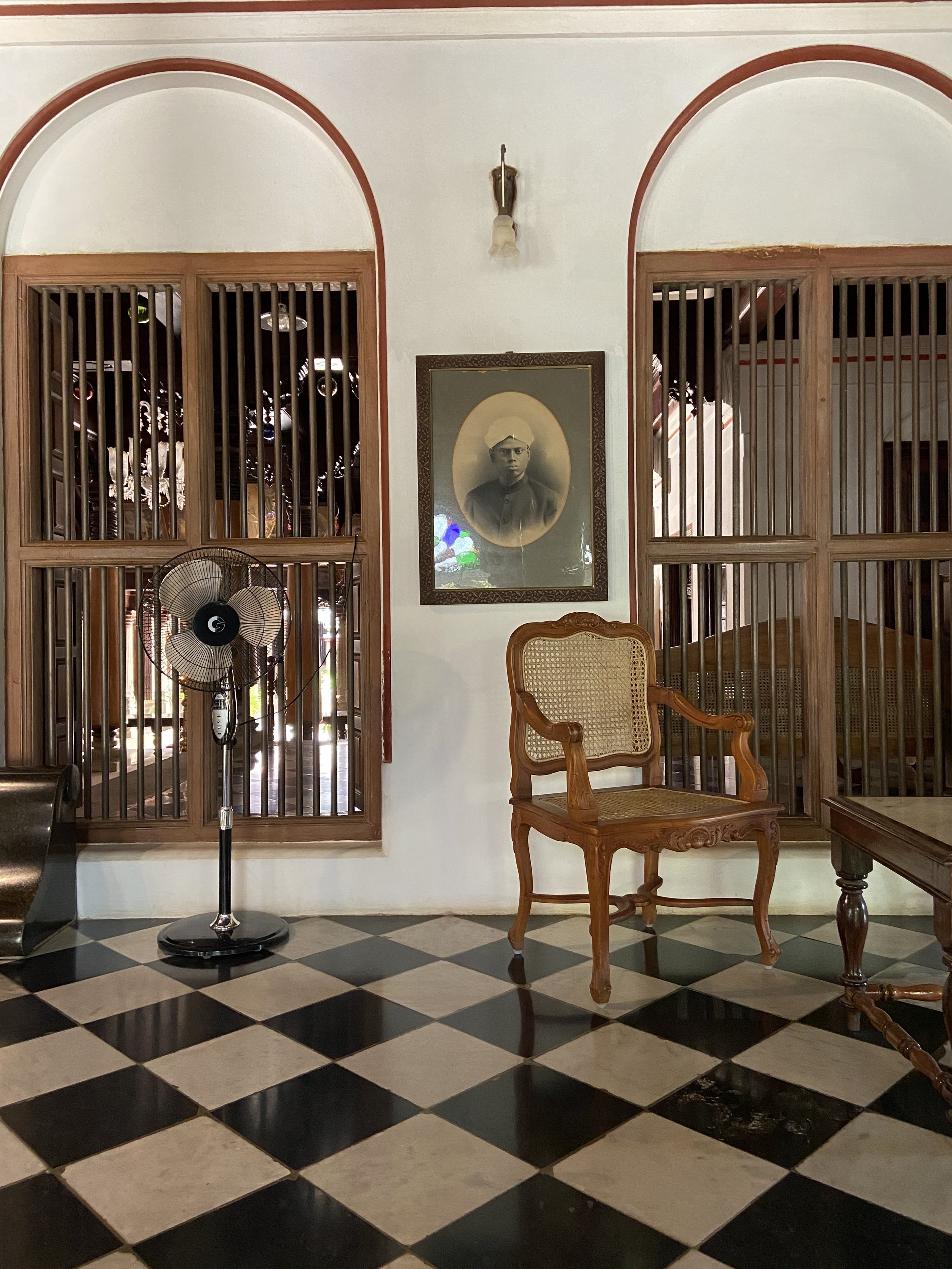Temples Of Tanjore & Mansions Of Chettinad with Svatma
Nataraj – Dance of the Universe
Along the course of the River Kaveri, lies the ancient city of Thanjavur (anglicized as Tanjore), the capital city of the Cholas, the Nayaks, and the Marathas. In a place where every road takes you on a trip down a glorious history, where every door opens to knowledge systems passed down through generations, where every conversation becomes a dalliance with the epics, Tanjore represents Dravidian India at its most opulent epoch. Here, time seems to stand still and reaches the ultimate crescendo of cosmic eternity. In this corner of the world, the holy and the heritage are one and the same. Cosmic symbols are philosophies of everyday lives.
One of the greatest metaphors of this culture is the divine dance of Lord Shiva: the Nataraja. This classical Natya Shastra pose symbolizes the five activities and five elements, depicting the universe through a whirlpool of movement. With one leg raised, long tresses spread fan-like behind the head, his everlasting dance epitomizes the wild energy and the ecstatic cosmological cycle of life. If the Lord stops his dance, the cosmos will collapse. Originating from the Pallava reign and blossoming to its finest form during the Chola empire, the Nataraja iconography embodies metaphysical legends. From the sound of the damaru emerges Creation; the burning fire heralds destruction; the demon underfoot connotes ego and ignorance; meshed with his hair is the Ganges; and the coiled snake represents the kundalini force.
The Nataraja is the most significant visual interpretation of the connection between spirituality and arts. The Lord of Dance solemnizes the release of the soul from illusions into transcendence. Another interpretation of the Shaivite philosophy is the Ardhnarishwar, the cosmic union of the masculine and the feminine energy, of Shiva and Shakti. Hindus consider marriage, an act of balancing the dual energies, as an essential step in achieving freedom from the cycle of life.
Exalted in Sangam Literature, Lord Shiva’s influence was paramount on the Chola kings. Under this maritime and mercantile kingdom’s benefaction, architecture, arts, and music reached their zenith.
Svatma- One’s Own Soul
In this idyllic land of rich architecture, arts, and literary heritage, the Svatma Heritage Residence is the reincarnation of a bygone era. The 150 years old ‘experiential’ mansion is the Iyer family’s ancestral home, transformed into a boutique hotel. The literal meaning of ‘sva’ is one’s own, and ‘atma’ means the soul. The name echoes the residency’s very essence, reckoning a journey within, exploring the self, and immersion in the arts and culture. A self-healing voyage by surrendering to the lush nature, sumptuous cuisine, ancient arts, and traditional crafts, conserved through a suspension of time. It is a space of rejuvenation and discovery for the discerning traveller.
Svatma is a testament to local artisans’ contribution and a preserved culture at its most authentic form. Amidst its spacious dimensions lies the charmed resonance of the bygone years and a distinctive commitment to revive the best of the old ways. The architecture, with colonial-style pillars with wooden beams, hand-painted murals, old and new furniture, and detailed art deco style, flaunts an overwhelming regal mood. The courtyard has a calm allure with local foliage, and the comforting fragrance of jasmine wafts around.
The Svatma experience offers a myriad of native affairs. The culinary trip is a treat to the palate, with its home-style cooked exuding rich flavours and textures. Guests can learn recipes directly from the chef’s kitchen. The vegetarian thali comprises keerai (spinach soup), kosambari salad, daal, fried cluster beans, banana flour dumplings, tamarind chutney, ragi halwa, and sambhar. Meals are served in four to seven courses, all elaborately curated and cooked to perfection, with local ingredients that evoke nothing but authenticity. The soup, salad, snacks, side dishes and desserts are as carefully prepared as the main dishes, leaving the guest craving for more or wholesomely fulfilled.
Food is a window to history and culture as much as art, craft, and textile. Food can evoke memories or create new ones for keepsake. Partaking of the experiences offered by Svatma can leave the mind and soul replenished and speak sufficiently about the care and attention paid to intimate details and authentic recreation of recipes that seem handed down from generations. You can almost feel the textures of antiquity, and the fragrance and flavours of indigenous produce.
Svatma regales its guests with classical performances such as the Carnatic music concert that evokes the legacy of the maestro, Tyagraj, with the harmonic melody of mridangam, morsing, and veena. The Bharatanatyam performance is an ode to the codified classical Thanjavur style, a pure rendition of abhinaya and nrutta. Aromatherapy massage, embodying the ancient medicinal knowledge of Siddha and naturopathy, relaxes the body and mind. There are academic experts and guides to take guests through every step of the journey.
Brihadishwara Temple
In the 11th century, Raja Raja Chola I commissioned the Brihadishwara Temple, also called Dakshina Meru. It is one of India’s largest lingas and now a part of the UNESCO World Heritage Site called the “Great Living Chola Temples”. The stunning architecture is studded with sculptures, inscriptions, frescoes, and murals; and includes mandapas, gopura, and a massive vimana towering over the garbhagriha, reminiscent of the pyramids.
Veena Makers
The traditional veena makers of Tanjore are involved in this art for generations; today, only 6 families remain. They make bespoke instruments for Carnatic musicians. Each masterpiece is made of jackfruit wood and adorned with hand-painted Saraswati idols, taking 15 to 20 days.
Bronze Sculptors
The mesmerizing process of bronze sculpting, from casting to the final form, is an ancient art form cradled in Tanjore. Sculptors are commissioned to make Nataraja idols by the government. Kannan, a 5th generation sculptor, informed that it takes 4 to 5 days to make a single piece.
Thanjavur Painting
The world-famous Thanjavur style of painting is made with the iconic gilded and gem-set technique by master craftsmen. The gold leaves and sparkling stones highlight specific aspects of jewellery and attires. The rich, vivid colours overlaid on delicate gesso work depict gods popularized by the Marathas.
Weavers' Village
The unique handloom weaving style is an artform paying homage to the rich colours and paintings of Thanjavur. The traditional saree, the epitome of textile design, was draped by the aristocracy and symbolized elegance and beauty.
Idol Makers
The community of idol makers gets commissions to work from all of South-east Asia for making pieces for temples. Their deft hands sculpt the gods and are a hypnotizing sight to behold.
This prosperous agrarian city has been a cultural centre for centuries. The jasmine fields and cashew farms have witnessed the rise and fall of empires. Yet, the symbols have survived.
Land of the Chettiyars
Fifty miles from Thanjavur lies another historical region of grandeur called Chettinad or Chhetinadu, named after the prosperous business and banking community of Nattukottai Chettiyars. The great traders once travelled to countries like Burma, Vietnam, Ceylon, Malaysia, and Singapore. While salt and spices were exported to South and South-east Asia, the architecture and design were imported from East Asian countries and Europe to their palatial homes.
These 19th century mansions stand tall and imposing, sometimes so enormous that their entrance and exit opened on parallel streets. Built with limestone type called karai, they flaunt Italian marbles, Burmese teak pillars and chandeliers, Indonesian crockery, European crystals, and Belgian wall-length mirrors.
The Chettiyars eclectic ideas evolved into the intermingling of Tamil and Western architectural styles, and even cuisine and customs. There are arches, wooden columns, balustrades, parapets, and stucco cornices displaying western and Indian sensibilities. The front façades feature figurines of deities, royals, and nature combining spiritual and aesthetic temperaments. Local legends believe that the Chettinad plaster, renowned for its smoothness, is made of seashell lime polished with egg white. Old sepia pictures and painted frescoes adorn the walls.
The most remarkable feature is the thinnai, the shaded porch at the entrance where the men held meetings. The unique, locally-made aathangudi tiles, in geometric patterns and striking colours, embellish the floors and walls.
The spacious courtyards, open kitchens, natural lighting, exotic artefacts, ventilated hallways, and practical design suitable for the climate housed joint families. Since these were traders who required safe storage areas, there are secret lofts, staircases, and doorways to hide jewellery, textile, and other precious items. The women’s domain was separate at the rear side where they prepared meals and raised children. The entire township follows a grid housing pattern, and temples have concentric tanks called oorani. Traditional Vastu Shastra influences every house with courtyards that balance the five elements. From the Cholas to the Chettiyars, patrons of art and culture have enriched these lands. Their legacy is a gift to every creative soul.

